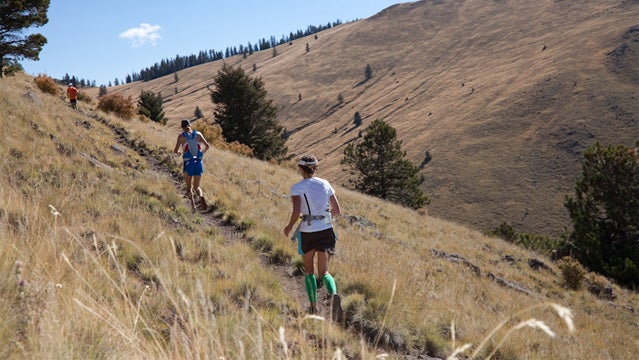It’s all coming back to me now.
Raising Rippers
Katie Arnold and guests write regularly on family adventure and bringing up active children.I’ve signed up for the in late May, and as my training kicks into high gear this month, I can feel some of the old, uncomfortable emotions flooding in.
First came the doubt. Will I be able to run that far? Do I have enough time to train? Will I get hurt? Is it bad for me? Is it bad for my family? I’m still at the point in my training when 50 miles seems like a ludicrous proposition, totally beyond the range of sanity.
Then came the fear. Last week, when I asked my husband, Steve, if he thought it was safe to run alone on the rolling, 15-mile rail trail along the Santa Fe Southern Railway, he replied, “Yes, but bring pepper spray.” I hadn’t really entertained the idea of being afraid on a trail that passes through high, open desert and ranchy suburbs, but suddenly I was. Oh, there you are, fear. I remember you.
Last year, training for two 50K races, I spent long hours running backcountry trails near my home in Santa Fe. Sometimes I ran with Steve or a friend. Sometimes I borrowed a dog. But many times I ran alone. At the beginning of the season, running solo in the high mountains scared me. Certain remote sections of trail seemed dark and lonely, mountain lion territory. I never saw a cat or a bear, but if I let my imagination wander, goosebumps would rise on my arms and I could convince myself that one was perched on a high rock, waiting to pounce.
Trails closer to town didn’t worry me as much, but I did wonder what sort of characters I’d run into. Four years ago, I was hiking with my four-month-old daughter, Pippa, in a baby carrier on my chest, when a homeless man threw a softball-size rock at us. It hit my head, just above my left temple. He started to chase us, but I screamed and ran uphill, quickly putting distance between us. Pippa was unharmed; I needed stitches. The man was later caught and spent more than a year in jail. For some time afterwards, I was afraid to run or hike alone, but over the years, my fear has subsided, thanks in large part to running. The more I run, and the more I run alone, the more comfortable I feel on the trails.
Familiarity doesn’t guarantee safety, of course—I’d seen the homeless man many times near the trails before he attacked me—but it can help release fear’s grip. I know my home trails so well: each turn, all the shady sections, where they cross creeks, zigzag through ponderosas, where the hikers are, and where I feel most alone. Running became a ritual to move me through fear, an orderly structure that helps me make sense of the world. Occasionally I see the homeless man in town, and I know where his camp is and give it wide berth. And if I do meet him on the trail, I know I’ll be able to outrun him.
Courage is something you have to train, like a muscle. It takes stamina, practice, heart. Now in mid-March, the fear feels brand new again, unfamiliar and soft—like peeling off winter layers to reveal strange, pale limbs I haven’t laid eyes on for months.
Last week, I got an email from . The former Olympic skier teaches a mindset training workshop that I attended last winter, called Ski to Live, helping people overcome fears and channel their inner wisdom to reach their full potential as skiers, athletes, and humans. In her email, titled “,” Ulmer explains that the magical state of effortless flow athletes call The Zone is not sustainable. In sport, as in life, we continuously move in and out of The Zone; one moment, mind and body drop away, the next we’re immersed in fear or anger, suffering or pain.
If we only aim for The Zone and resist the rest, Ulmer says, we miss out on the true experience. Instead, she urges, “Include it all … that’s what really happens out there. That’s the magic.”
This is true for any sport or endeavor: racing triathlons, playing tennis, practicing the piano. It’s like meditation. You can’t ever hope to completely empty your mind of thoughts, but you can learn to watch them come in and let them drift by. My meditation teacher, Grove Burnett, who leads , compares it to watching a river. “Receiving thoughts without getting involved,” he says, “is the essence of wisdom.”
I’m far from wise, but running is teaching me how to sit, and sitting is teaching me how to run, and they’re both teaching me how to live. When I think of it this way, the fear and the doubt can seem almost comforting, like old friends who have dropped in for an unannounced visit. Maybe they’ll stay for a little while, but eventually they’ll be on their way. Hello again. I remember you.
With any luck, I’ll be logging long miles on the trails in the coming months. And as I do, I’m going to try to let it all in: the fear, the doubt, the pain in my hamstring, the fear and doubt about the pain in my hamstring, the joy, the guilt, the gratitude. They mean I’m training. They mean I’m leaning in. They mean I’m living.


